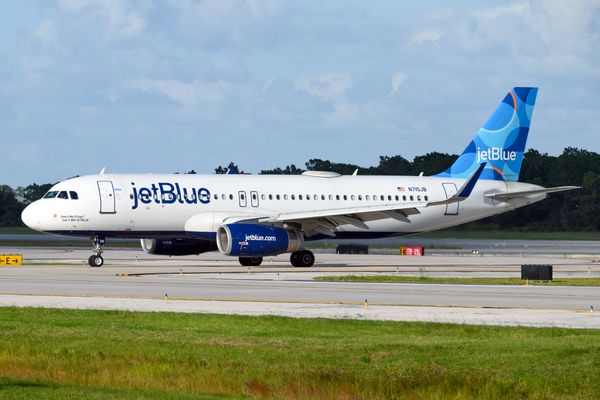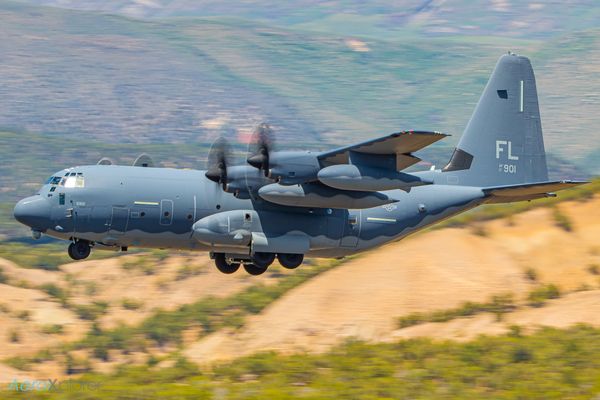Search and rescue (SAR) operations, as the first line of defence in emergencies, have undergone a profound transformation with the integration of aircraft. This evolution is marked by a synthesis of precision, adaptability, and cutting-edge technology, shaping intricate procedures that enhance efficiency and increase the likelihood of successful outcomes.

Aerial Reconnaissance: The Eyes in the Skies
A cornerstone of SAR operations lies in the domain of aerial reconnaissance. Aircraft with state-of-the-art imaging systems, such as infrared and thermal cameras, are critical in searching for missing persons or distressed vessels. The 1972 Andes flight disaster is a historical testament to the pivotal nature of aerial surveillance, where fixed-wing aircraft and helicopters provided real-time data to locate survivors in remote landscapes.
Fixed-wing aircraft and helicopters conduct systematic scans over vast terrains, surmounting geographical challenges and providing real-time data to SAR teams. The Andes incident remains a poignant example of how aerial reconnaissance becomes the linchpin in pinpointing the location of survivors in remote and treacherous areas.

Moreover, advancements in satellite technology have augmented the aerial reconnaissance process. Satellite-based imagery provides a broader perspective, aiding in identifying potential search areas and streamlining aircraft deployment for more targeted efforts. This collaboration between aerial and satellite-based reconnaissance exemplifies the synergy achieved through technological integration.
Rotary-Wing Aircraft: Dynamic Assets in Complex Terrains
Rotary-wing aircraft, particularly helicopters, emerge as dynamic assets in SAR, offering unparalleled agility to access inaccessible or challenging terrains. The 2018 Tham Luang cave rescue in Thailand provides a poignant illustration of the intricacies involved in this process.

Helicopters, supported by divers and international rescue teams, navigated intricate cave systems, transporting personnel and equipment while providing indispensable aerial support. The success of this operation underscores the pivotal role helicopters play in accessing locations where traditional ground operations prove arduous.
The technological evolution of helicopters is noteworthy. Modern search and rescue helicopters are equipped with advanced avionics, night-vision capabilities, and rescue hoists, enhancing their ability to operate in diverse environments and challenging conditions. These enhancements extend the operational envelope of helicopters, making them versatile assets in SAR scenarios ranging from mountainous terrains to urban environments.

Logistical Lifelines: Swift Deployment and Resource Transport
Moving beyond reconnaissance, aircraft function as logistical lifelines in SAR missions. Historical examples, such as the 2010 Haiti earthquake response, spotlight the swift deployment of helicopters, cargo planes, and diverse aircraft types to transport rescue teams, medical supplies, and aid to affected areas. The logistical prowess of aircraft ensures the prompt arrival of SAR teams and essential resources, optimizing on-ground operations and bolstering the chances of successful outcomes in critical situations.
The evolution of cargo planes, such as the Lockheed C-130 Hercules, has enhanced SAR logistics. These aircraft have specialized airdrop systems, allowing them to deliver essential supplies to remote or inaccessible locations, including food, water, and medical equipment. Additionally, advancements in aeromedical evacuation capabilities enable these aircraft to serve as flying hospitals, facilitating the rapid evacuation of injured individuals from the scene of an incident to medical facilities.

Unmanned Aerial Vehicles (UAVs): Technological Frontiers in SAR
Unmanned Aerial Vehicles (UAVs) or drones emerge as technological frontrunners, introducing an additional layer of precision and safety to SAR processes. Drones with high-resolution cameras and sensors provide real-time data and operate in hazardous conditions without risking human lives. In scenarios like wildfires, drones can identify hotspots, locate missing individuals, and assess the extent of the blaze, offering invaluable support to traditional aerial and ground efforts.
The versatility of drones extends beyond reconnaissance. UAVs with payload delivery systems can transport emergency supplies, such as medical kits or communication devices, to isolated or inaccessible areas. This capability enhances the effectiveness of SAR missions, especially when immediate access is crucial.

Technological Advancements: A SAR Force Multiplier
Technological advancements, from satellite communication systems to GPS technology and sophisticated sensors, have revolutionized SAR coordination and execution. These tools facilitate more precise search patterns and enhance overall operational efficiency. Modern military aircraft, epitomized by the Lockheed C-130 Hercules, showcase adaptability for various SAR tasks, including medical evacuations, cargo drops, and personnel deployment, amplifying the multifaceted capabilities of aircraft in diverse scenarios.
Satellite communication systems enable real-time coordination between SAR teams on the ground and aircraft in the air. This seamless connectivity enhances situational awareness, allowing rapid adjustments to search patterns based on evolving information. GPS technology provides precise navigation, ensuring that aircraft can navigate complex terrains accurately, optimizing search efforts and reducing response times.

Sophisticated sensors empower aircraft with enhanced detection capabilities, including synthetic aperture radar (SAR) and electro-optical/infrared (EO/IR) systems. SAR systems can penetrate through vegetation and adverse weather conditions, revealing details that traditional visual methods might obscure. EO/IR systems provide high-resolution imagery, enabling SAR teams to identify and assess situations more effectively.
In medical evacuations, technological advancements in aeromedical systems have redefined the speed and efficiency with which injured individuals can be transported to medical facilities. Aeromedical evacuation platforms, equipped with advanced life support systems, enable in-flight medical care, expanding the golden hour—the critical window for successful medical intervention.

The Synergy of Human Ingenuity and Technological Prowess
The comprehensive role of aircraft in SAR operations unfolds through meticulous processes, technological advancements, and historical examples. Aerial reconnaissance, logistical support, and the integration of cutting-edge technologies position aircraft as indispensable assets in emergency response. As technology advances, aircraft stand poised to continue their vital role as aerial guardians, navigating challenges and saving lives through their unparalleled capabilities and precision processes.
The evolution of SAR operations, facilitated by aircraft, epitomizes the synergy between human ingenuity and technological prowess in preserving and protecting life. The intricate dance between the human factor—bravery, expertise, and resilience—and the technical dimension—innovations, advancements, and adaptability—creates a powerful continuum that ensures SAR operations are not only effective but are conducted with a human-centric approach, embodying the commitment to safeguarding lives in times of crisis.

As we look to the future, the trajectory of SAR operations intertwines with the ever-advancing tapestry of aviation technology, promising continued advancements that will further refine and amplify the capabilities of aerial guardians in the quest for human safety and well-being.
Mixed Signals: The Tragic Story of Iran Air Flight 655 » Essential Legal Tips for Tourists Chartering a Yacht in Dubai » My Unexpectedly Cheap Last-Minute Getaway with JetBlue Airlines »
Comments (0)
Add Your Comment
SHARE
TAGS
INFORMATIONAL Humanitarian Military C-130 Drones Air Force Natural Disaster War Helicopters TechnologyRECENTLY PUBLISHED
 Essential Legal Tips for Tourists Chartering a Yacht in Dubai
Discover how yacht rentals in Dubai are regulated and learn what every tourist should know about contracts, insurance, and taxes before setting sail.
TRIP REPORTS
READ MORE »
Essential Legal Tips for Tourists Chartering a Yacht in Dubai
Discover how yacht rentals in Dubai are regulated and learn what every tourist should know about contracts, insurance, and taxes before setting sail.
TRIP REPORTS
READ MORE »
 Mixed Signals: The Tragic Story of Iran Air Flight 655
What would have otherwise been a routine passenger flight across the Strait of Hormuz culminated in a heartbreaking tragedy, all because of a costly system misunderstanding by an external party. This is the tragic story of Iran Air Flight 655.
STORIES
READ MORE »
Mixed Signals: The Tragic Story of Iran Air Flight 655
What would have otherwise been a routine passenger flight across the Strait of Hormuz culminated in a heartbreaking tragedy, all because of a costly system misunderstanding by an external party. This is the tragic story of Iran Air Flight 655.
STORIES
READ MORE »
 My Unexpectedly Cheap Last-Minute Getaway with JetBlue Airlines
My name is Daniel Moreno. I live in Tampa, Florida, and I work as a logistics coordinator at a small distribution company. I had to book a JetBlue Airlines flight at the last minute. I was sure the price would be high because that’s usually what happens with late bookings within the United States. But the final cost surprised me — the ticket was much cheaper than I expected.
TRIP REPORTS
READ MORE »
My Unexpectedly Cheap Last-Minute Getaway with JetBlue Airlines
My name is Daniel Moreno. I live in Tampa, Florida, and I work as a logistics coordinator at a small distribution company. I had to book a JetBlue Airlines flight at the last minute. I was sure the price would be high because that’s usually what happens with late bookings within the United States. But the final cost surprised me — the ticket was much cheaper than I expected.
TRIP REPORTS
READ MORE »



